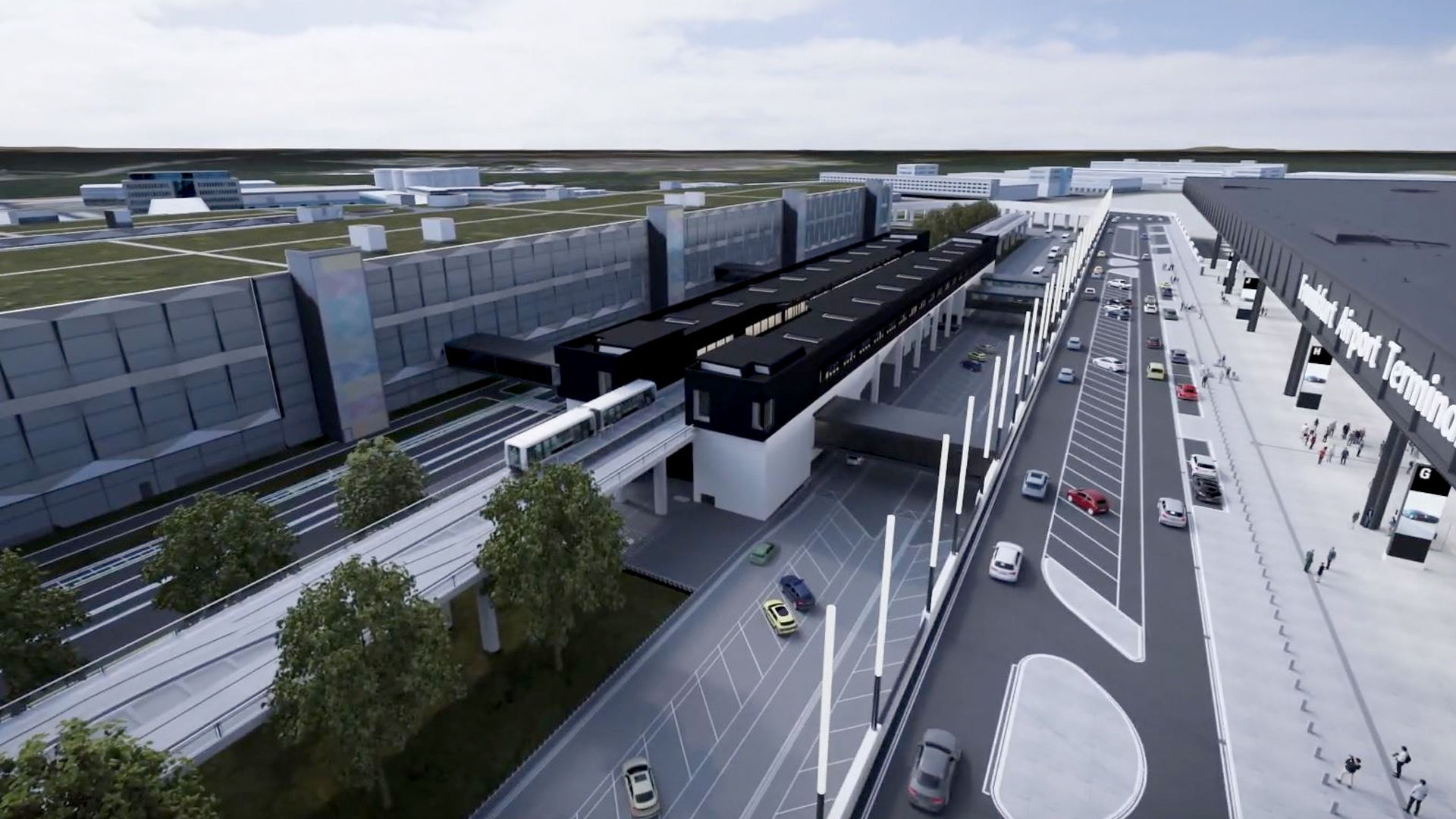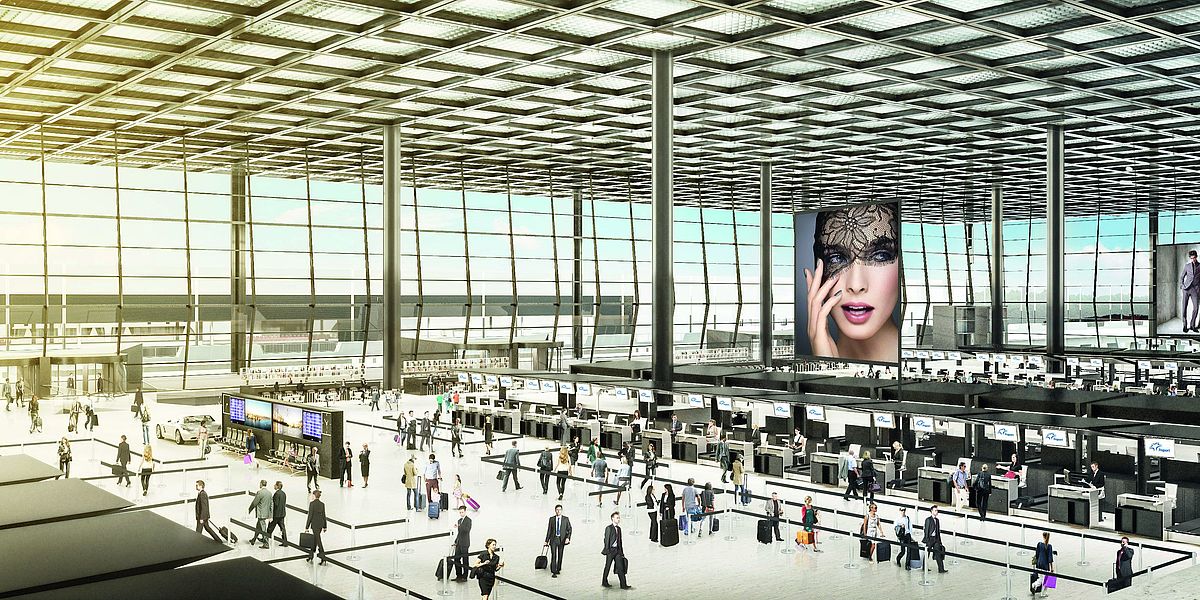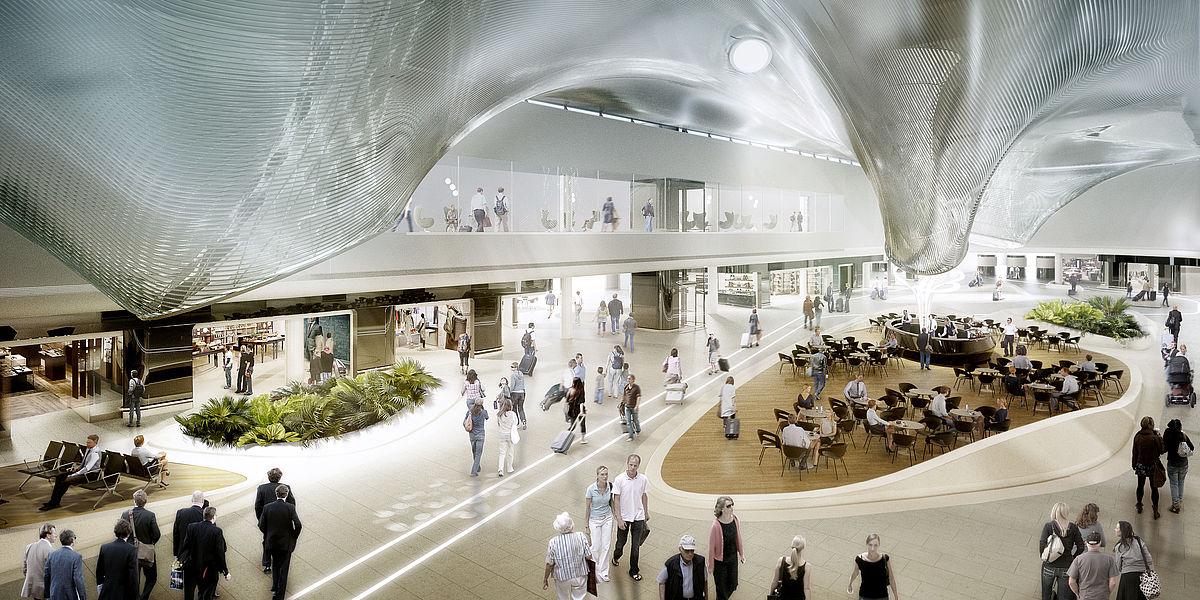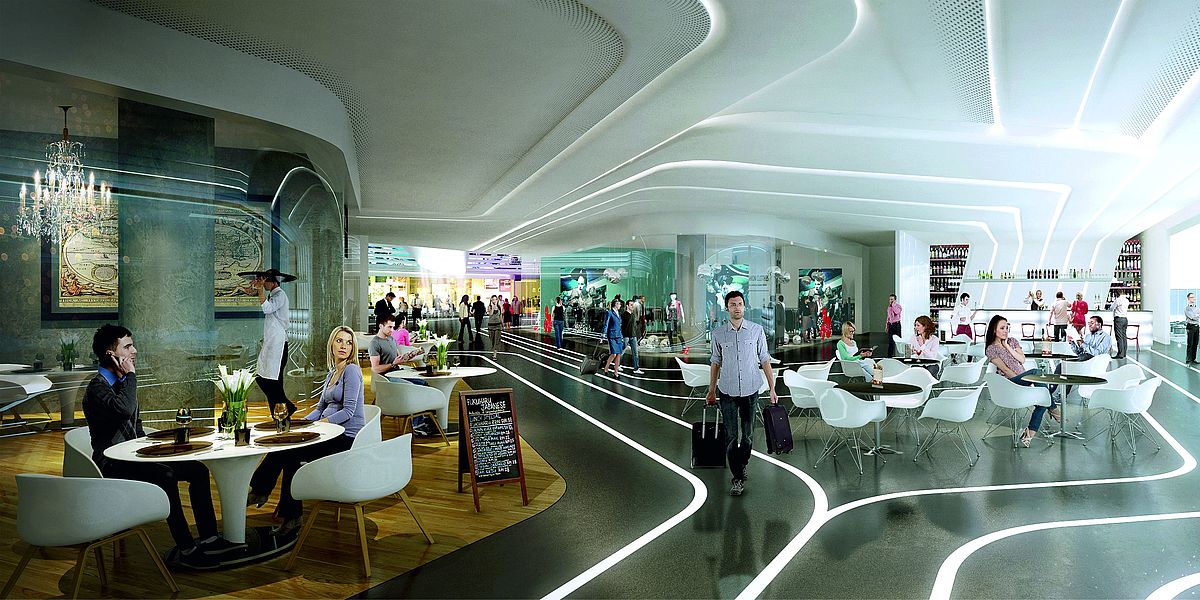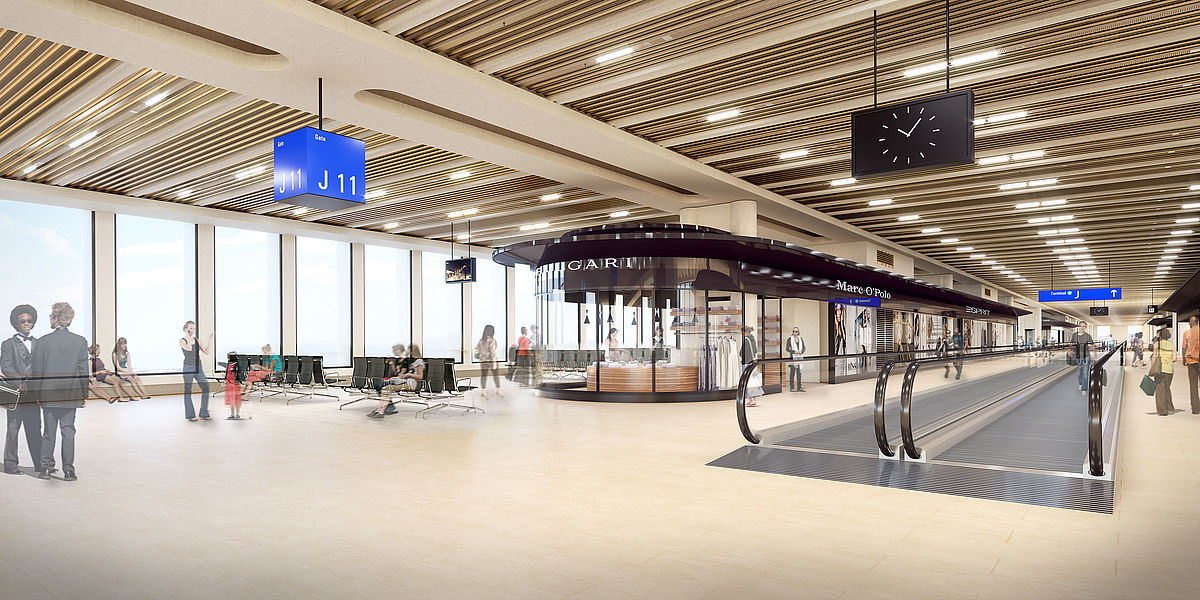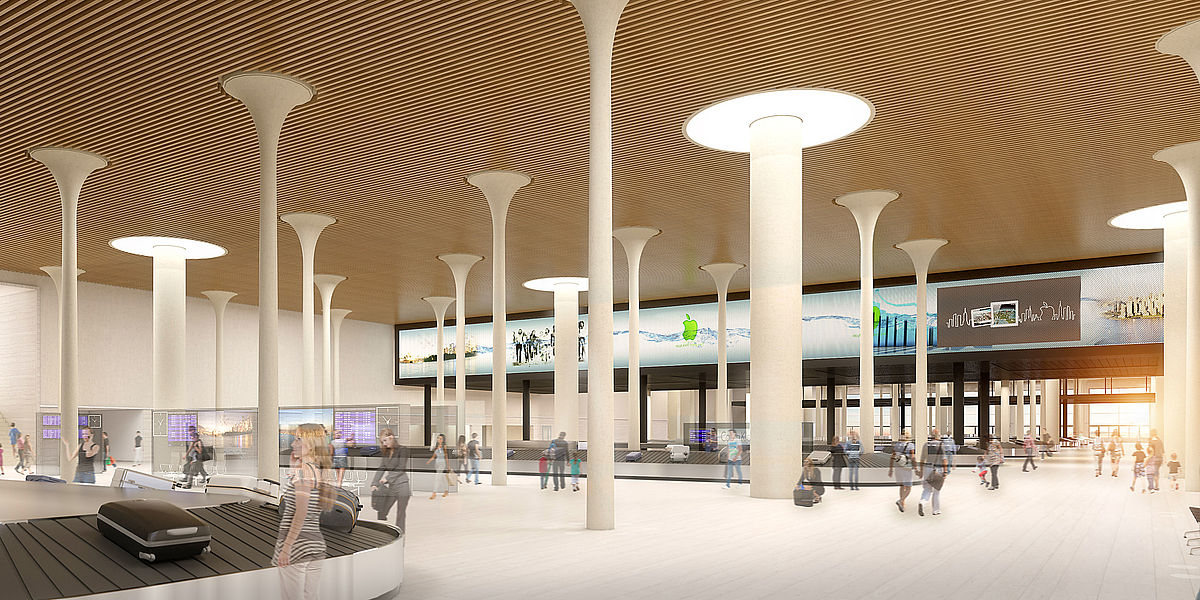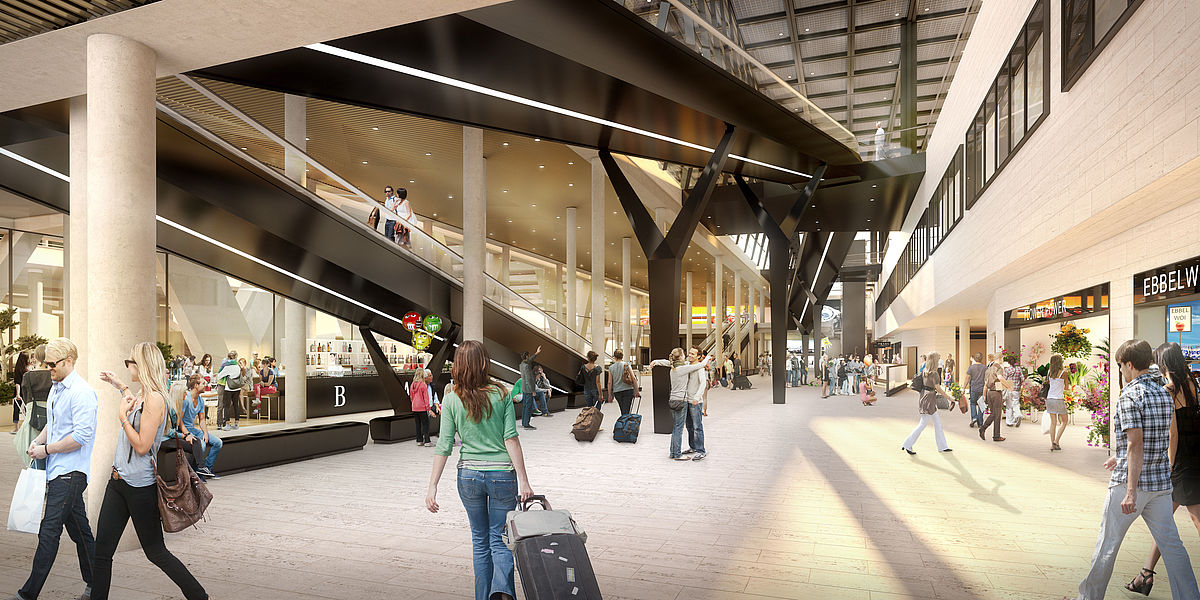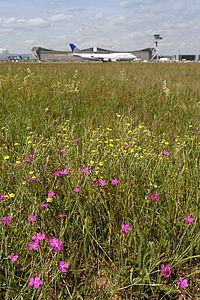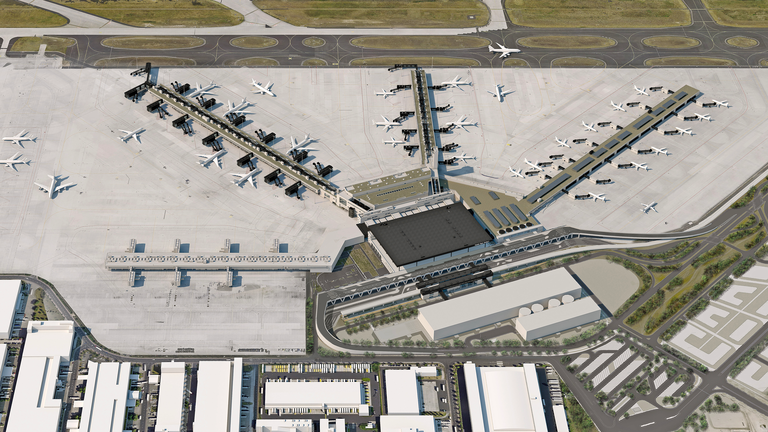
Building the Future
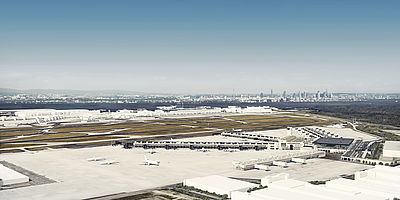 Terminal 3 is being built to the south of Frankfurt Airport. Source: Fraport AG / © Christoph Mäckler Architekten
Some people who have lived here for half a century claim that they have never passed a single day without seeing a construction site or crane. And it isn’t only the city that is in flux; its “gate to the world” – the airport – has also reinvented itself multiple times over the decades. And it is now happening again, since the construction of the new Terminal 3 began in the south of Frankfurt Airport in the fall of 2015. The plans for it were actually forged quite a bit further back in time, though. In the late 1990s, Fraport―the airport’s operator―began talking with the city of Frankfurt about a possible expansion. The reason was that over the long term, the two existing terminals―the first of which had begun operating back in 1972 while the second was inaugurated in 1994―would be outpaced by the steady growth in aviation volumes. By 2019 the number of passengers using Frankfurt Airport had swelled to more than 70 million. Unforeseen events can definitely interrupt or dramatically reverse this trend, like the COVID-19 pandemic that began in the spring of 2020. However, as other crises have shown in the past, the aviation sector eventually resumes expanding.
Terminal 3 is being built to the south of Frankfurt Airport. Source: Fraport AG / © Christoph Mäckler Architekten
Some people who have lived here for half a century claim that they have never passed a single day without seeing a construction site or crane. And it isn’t only the city that is in flux; its “gate to the world” – the airport – has also reinvented itself multiple times over the decades. And it is now happening again, since the construction of the new Terminal 3 began in the south of Frankfurt Airport in the fall of 2015. The plans for it were actually forged quite a bit further back in time, though. In the late 1990s, Fraport―the airport’s operator―began talking with the city of Frankfurt about a possible expansion. The reason was that over the long term, the two existing terminals―the first of which had begun operating back in 1972 while the second was inaugurated in 1994―would be outpaced by the steady growth in aviation volumes. By 2019 the number of passengers using Frankfurt Airport had swelled to more than 70 million. Unforeseen events can definitely interrupt or dramatically reverse this trend, like the COVID-19 pandemic that began in the spring of 2020. However, as other crises have shown in the past, the aviation sector eventually resumes expanding.
The new Terminal 3, conceived as the centerpiece of a long-term strategic expansion project, therefore continues to be an essential ingredient for ensuring the future of Frankfurt Airport. Its inherent modularity makes it possible to flexibly schedule the construction and opening of its parts depending on the actual need for extra capacity. By the time it is finished, it will be able to handle up to 25 million passengers a year. The first construction phase comprises the main terminal building with arrival and departure levels, a marketplace, lounges and an automated baggage conveyor system plus Piers H and J for an initial passenger volume of 14 million. The start of operations is currently projected for the 2025 summer season, depending on requirements. Completion of the second phase, consisting of Pier G, is being moved forward. It has already progressed to the point that it can presumably open by the start of the 2022 summer season and contribute enough capacity for up to five million more passengers. Construction kicked off in 2015, initially focusing on the main building with arrival and departure levels, a marketplace, lounges and a baggage conveyor system, and Piers H and J. Work on the first section of Pier G then began in 2019. The parts now being built will enable Frankfurt Airport to welcome 19 million additional passengers a year. With an investment volume of around four billion euros, Terminal 3 is one of the largest privately financed infrastructure projects in Europe.
The terminal's design provides for construction to be carried out in three sections flexibly aligned to capacity requirements. In the first construction phase, the main building with arrival and departure levels as well as the marketplace, lounges and baggage handling system will be built. In addition, the two Piers H (Schengen) with a length of 400 meters and J (Non-Schengen) with a length of 600 meters will be built. In the second construction phase, Pier G will be built as a fully-fledged and modern building and integrated into the new Terminal 3. At a later date and depending on the demand situation, the pier can be extended by about 200 meters.
But flexibility is not only a top priority in the construction of Terminal 3: The building is designed so that the entire infrastructure, the piers, gates, transport and baggage systems as well as the retail areas can be expanded or modified at any time during ongoing operations.
A Pleasant Place to Spend Time While in Transit
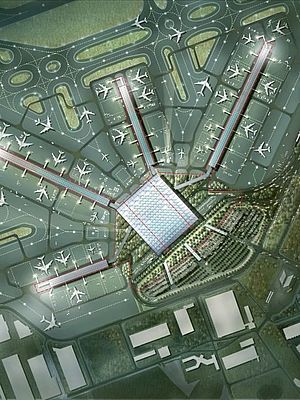 The concept submitted by the London-based architects Foster and Partners was named winner of the architectural competition and formed the basis of the competition for the realization of Terminal 3. © Foster & Partners
“Today, airports have become destinations in themselves. And most of them receive more visitors than many downtown areas. This makes it even more essential for airports to perform many of the same functions as cities. Which is exactly what we are going to accomplish with Terminal 3.” (Christoph Mäckler, architect of Terminal 3)
The concept submitted by the London-based architects Foster and Partners was named winner of the architectural competition and formed the basis of the competition for the realization of Terminal 3. © Foster & Partners
“Today, airports have become destinations in themselves. And most of them receive more visitors than many downtown areas. This makes it even more essential for airports to perform many of the same functions as cities. Which is exactly what we are going to accomplish with Terminal 3.” (Christoph Mäckler, architect of Terminal 3)
Modern but with a feel-good ambiance: it was with this promise that Frankfurt architect Christoph Mäckler convinced the jury and won the contest held to choose who would design the new Terminal 3. Previously, the London architectural firm Foster and Partners had won the first round, the architectural competition, and designed the basic shape of the modular terminal. In Mäckler’s architectural vision, piers, gates and lounges are reminiscent of a city’s streets and squares.
His idea is to go beyond merely building a transit zone and create an urban environment in which people enjoy working, shopping, eating, relaxing and, of course, boarding planes to distant destinations. Light-flooded spaces in warm natural hues evoke a pleasant atmosphere that invites travelers to settle in and stay a while. “This will clearly set Frankfurt Airport apart from other international airports,” says Mäckler. “It will be the world’s first terminal in which people can truly feel good.”
In other words, not only passengers: airport employees will also enjoy pleasant working conditions. Among other things, there will be as little artificial lighting as possible. Instead, floor-to-ceiling glass panes will admit natural daylight into voluminous halls, rooms and other areas. Cables and pipes will blend smoothly into the architecture to avoid disrupting its esthetics and expansiveness. This attention to detail will doubtless also please visitors and shoppers. The marketplace in the middle of the new terminal will occupy around 3,000 square meters and be filled with boutiques and shops, as well as food outlets serving a wide range of cuisine
A Smart Terminal for Less Stress
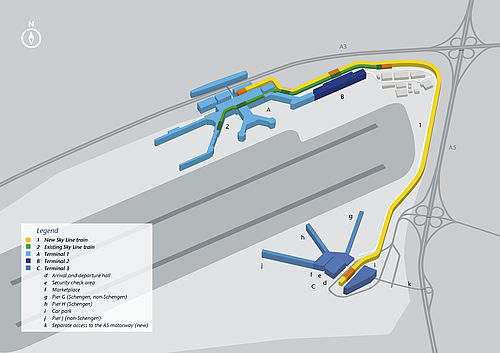 A new Sky Line train will let travelers get between Terminals 1 and 3 in just eight minutes. You can learn more about it here!
Today’s airports are complex transportation nodes that are integrated into a global network and used by millions of people. It is therefore essential to create a terminal building that accommodates and adapts to the needs of those who enter it. Unexpected delays, for example, may make it necessary for travelers to spend more time here than planned. Terminal 3 is also designed to make it as easy and straightforward as possible for passengers to get to their flights.
A new Sky Line train will let travelers get between Terminals 1 and 3 in just eight minutes. You can learn more about it here!
Today’s airports are complex transportation nodes that are integrated into a global network and used by millions of people. It is therefore essential to create a terminal building that accommodates and adapts to the needs of those who enter it. Unexpected delays, for example, may make it necessary for travelers to spend more time here than planned. Terminal 3 is also designed to make it as easy and straightforward as possible for passengers to get to their flights.
A special challenge is posed by the relatively large distance from Terminal 3 to the other terminals and the regional and long-distance train stations in the north of the airport. They are located a couple of kilometers apart as the crow flies and separated by two runways, which makes the actual distance even greater. To nevertheless ensure that travelers can get to and from Terminal 3 as conveniently and fast as possible, a new Sky Line train similar to the existing Sky Line train is being built. It will link the new terminal in the south of the airport with the two existing terminals and other transportation facilities in the north. The ride between Terminals 1 and 3 will take about eight minutes with a brief stop at Terminal 2. Its dual tracks will be nearly six kilometers long, running partly at ground level and partly raised, supported by columns. The system will have capacity to carry more than 4,000 travelers per hour and direction between the airport’s three terminals. An extended motorway interchange will also let those arriving by car conveniently drive straight to Terminal 3.
Step by Step
What has been planned step by step over the years is slowly taking on more and more concrete forms. With the completion of Pier G in 2021, the first intermediate finish line is approaching. In 2024, according to current plans, the construction of the main building and the Piers H and J in the south of Frankfurt Airport is completed.
Have a Look around!
Discover Terminal 3 via Virtual Reality! Enjoy a 360-degree view of the new terminal at Frankfurt Airport on your computer or your smartphone. If you want to switch to another view, navigate the red dot onto the desired preview. With a mouse click or a tip on the touchscreen you can then explore the different areas of Terminal 3. Give it a try!
Home

